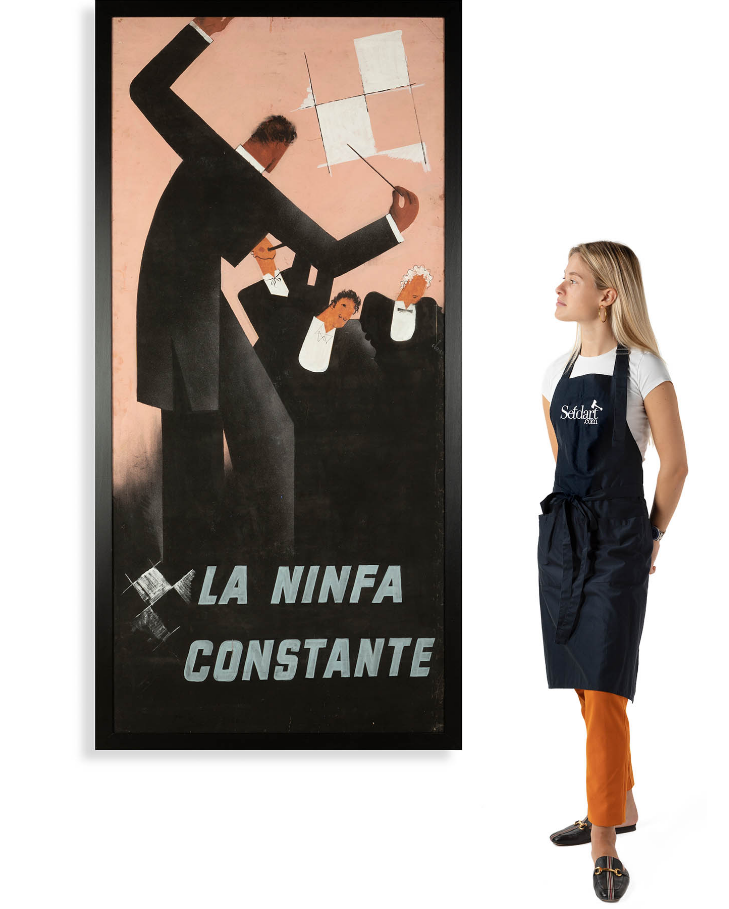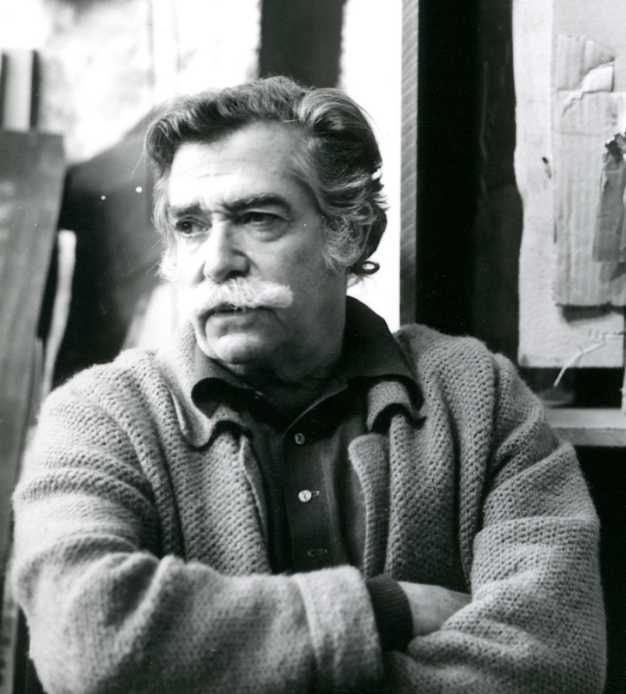Antoni Clavé: a milestone in the history of film posters
During the period of the Second Republic, poster design experienced a golden age under the guidance of Antoni Clavé. The cinematographic posters that the Catalan artist made between 1833 and 1835 represent one of the greatest milestones of the national and international avant-garde in this field. Proof of this is the original poster made for the movie “The constant nymph”. The very gouache of more than two meters that wore more than 80 years ago in the lobby of the mythical Capitol cinema in Barcelona, announcing the premiere of the film, will be tendered in our contemporary art auction on July 27
The poster revolution that took place with the arrival of the Second Republic represented a great opportunity for dozens of young artists, who found in advertising illustration the definitive boost to their career. At a time when the plastic arts were experiencing a deep creative crisis in Spain, a new market broke out in which the poster became, thanks to social and political transformations, into the most genuine art of the masses. Proof of the scale that this phenomenon especially reached in the city of Barcelona was the constitution in 1931 of the first Association of Poster Makers, of which Antoni Clavé was a member since its foundation.
After presenting a model for the Tívoli cinemas in which he illustrates a Picassian harlequin, a very young Clavé managed to start a prolific collaboration with the CINAES company from 1933, owner of the most prestigious cinemas in Barcelona. The absolute freedom of creation granted to him gave free rein to the artist, who taking as references great figures in the field such as Josep Renau, Cassandre, or Jean Carlu, but also Miró, Picasso, or Calder transformed and ennobled the art of poster art.
Unlike the lithographic techniques with which advertising posters are usually produced, Clavé conceived each of them as a unique work painted with gouache on paper. Heir to the tradition started by the architects of Catalan modernism such as Casas, Rusiñol, Utrillo or Picasso, Clavé’s avant-garde style stood out overwhelmingly in front of the dominant conservative style at that time showing an iron commitment with the freedom promulgated by international movements such as object art, surrealism, cubism or futurism.
Radically opposed to the hyperrealism of the conventional film poster, the painter will conceive a totally depersonalized type of poster in which the main stars will be represented as if they were mannequins. Stripped of any emotional hint, Clavé focuses all the attention on the impact of the shapes, volumes and curved lines under a cleanly avant-garde invoice.
Of the many posters made in this splendid stage, only 32 have reached our days, of which 19 were exhibited, as in the case at hand, in the lobby of the Capitol Club . Precisely those that were destined for this room were the most spectacular of all of them, due to the owner’s desire to make each premiere a true scenographic event. As a curiosity, it should be noted that the reason for his survival in the Spanish Civil War is due to the fact that Clavé himself sent a selection of his posters to Germany in 1935 for the report that the magazine would dedicate to him. Gebrauchspraphick. Six years later they were returned intact to the artist’s home.
The figure of Antoni Clavé will be forever linked to the history of poster design. With them he kicked off a dazzling career in which, among many other achievements, he became the most genuine exponent of the Barcelona poster world.




